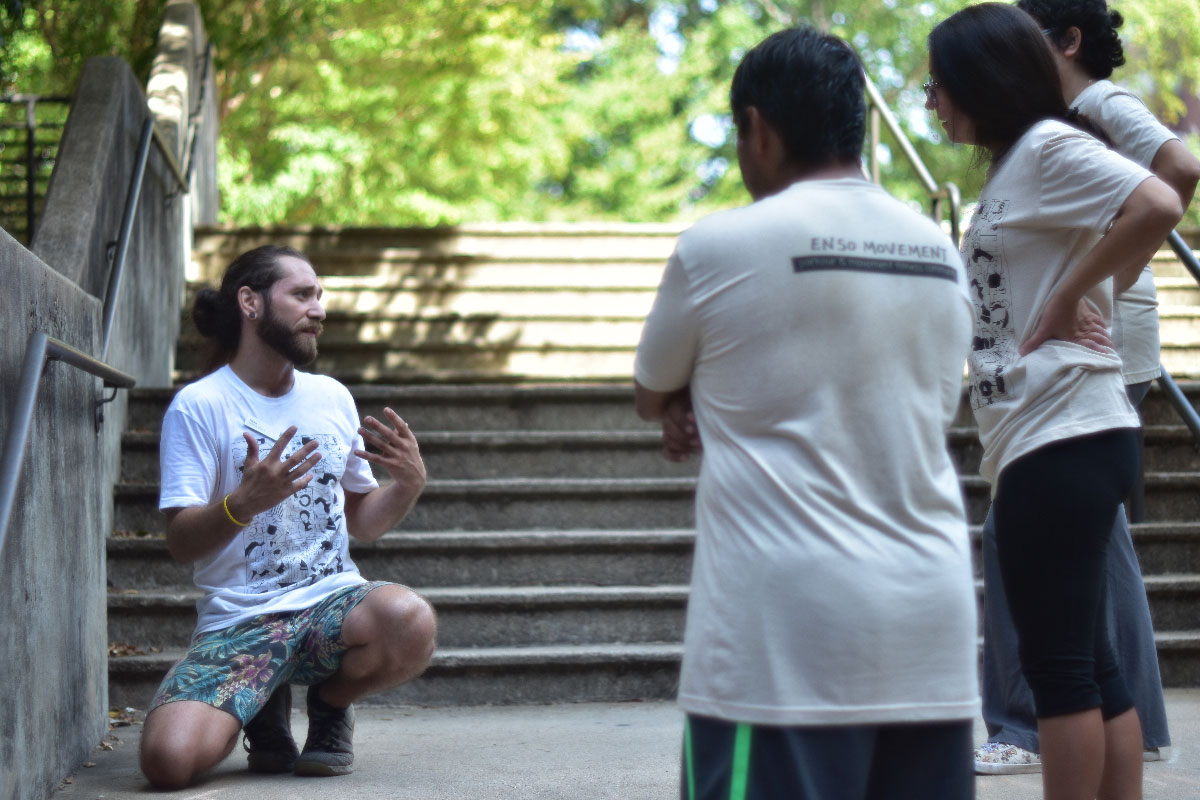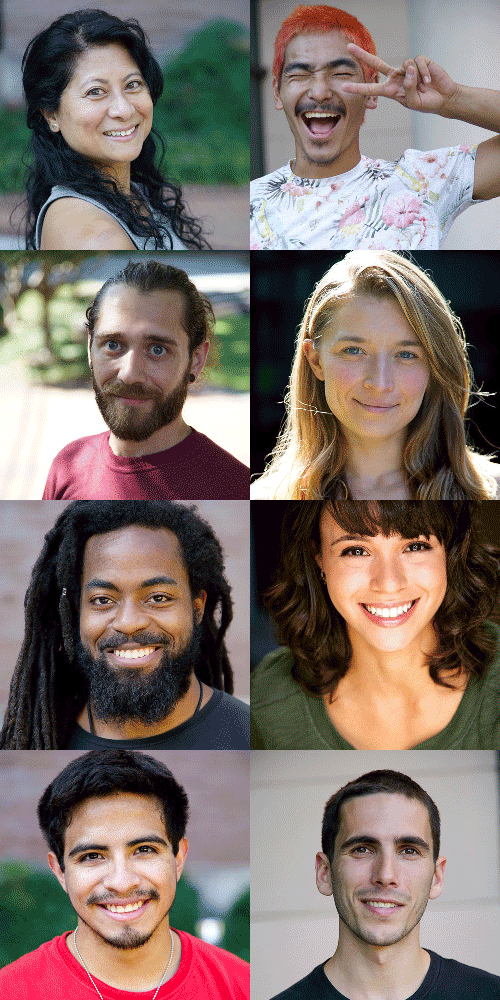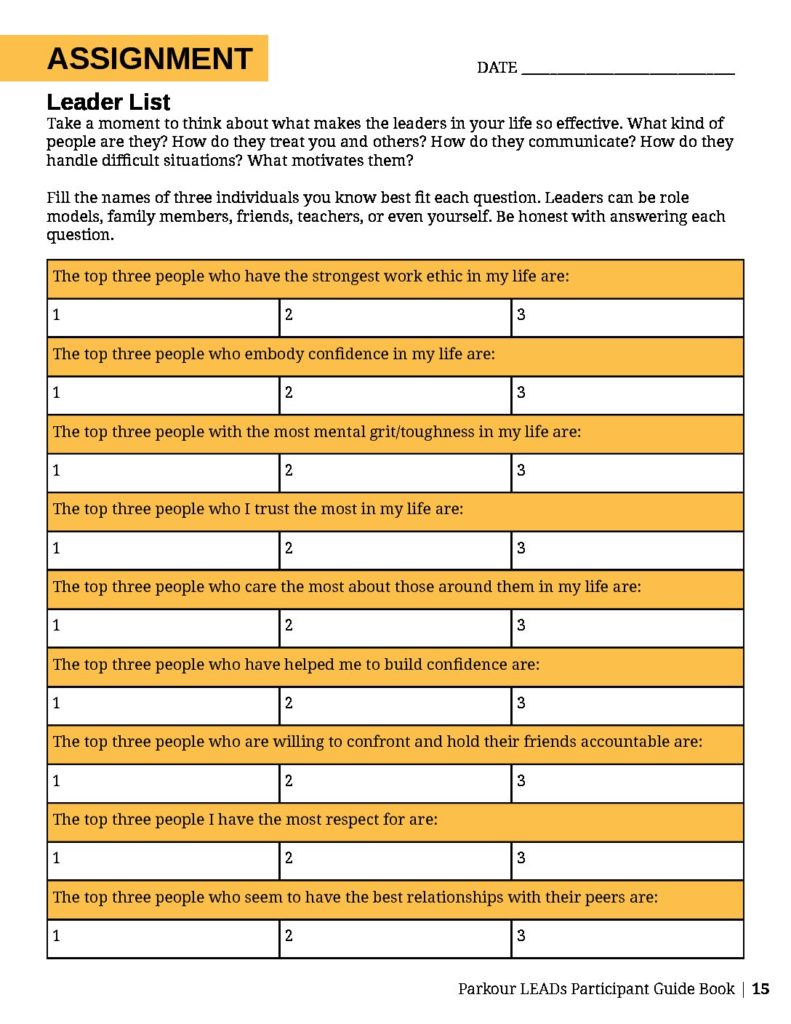
What is great leadership?
The question is simple and yet many of us may have different answers. A simple definition of leadership is having the ability to motivate others towards a specific goal. Parkour coaches may have their student-athletes work to achieve a certain standard. Those coaches would provide drills in progressing the students. The student-athletes’ incentive is to increase their confidence in higher skills. But great leadership requires much more than motivation. Coaches have to consider safety, practice time, and equipment. Some of the skills leaders need are the ability to plan and prepare. What are additional qualities that come to mind when you think of leadership?
Coaches and business owners aren’t the only leaders in the parkour community. There are many ways we can all show up to share or to motivate others. An teen-athlete can lead a game of add-on, a practitioner can volunteer to organize a clean-up of an outdoor parkour spot, or a group can show someone new a unique and friendly challenge.
⇒ Leadership Questions
[Click ‘Next’ for additional questions]
[Video] Follow the Leader in Action with "Le Parkour de Nuit" and "Visions"
The videos in this module demonstrate different types of leadership – it is distinct and unique to an individual, their groups, and the challenge.
“Le Parkour de Nuit“
A historical video showcasing the early art du déplacement practitioners. In the beginning, many of the young adults would train after school late into the night and/or early morning. This video demonstrates a group following David Belle in a “follow-the-leader” -fashion with minimal talking, lots of physical challenges, and a wide range of movements.
“Visions” by Julie Angel
A glimpse into the training of some of the original art du déplacement practitioners and friends. In contrast to the previous video, “Le Parkour de Nuit”, this demonstrates a group’s leadership plasticity. Unique individuals take lead when the time is right in exploring new movements and spaces.
Qualities of a Leader
A common misconception is that individuals are naturally gifted with the ability to lead others. The truth is that leadership, like any other skill, can be acquired with time, effort, and practice. Although all leaders help to motivate others, offer guidance, and initiate action – every leader is unique in their traits. A few of those qualities may include:
| Alert | Attentive | Available | Benevolent | Bold |
| Cautious | Compassionate | Content | Creative | Decisive |
| Dependable | Determined | Diligent | Discernible | Enduring |
| Enthusiastic | Faithful | Flexible | Forgiving | Generous |
| Gentle | Grateful | Honorable | Hospitable | Humble |
| Intuitive | Joyful | Justful | Obedient | Patient |
| Persuasive | Punctual | Resourceful | Responsible | Secure |
| Sensitive | Sincere | Thorough | Thoughtful | Tolerant |

The Summit Parkour Gathering’s panel of coaches is a great example of diversity and uniqueness.
Unique Leaders
Leadership isn’t centered on one particular set of specific characteristics as you can see from the list above. Different teams and environments demand unique leaders. In one situation we may need a motivating leader who can channel the team’s energy and potential. While another situation may require a leader who can calculate any risks and make a hard decision. Leadership must have a variety of measures to stride towards specific goals. The reality is that there are many kinds of leaders with very different traits and that we, ourselves, share a great number of those same qualities.
We may share similar experiences of being told to brush our teeth twice-a-day, have respect for others, or look before crossing the road. It’s the combination of everything that we have learned and done that truly makes us different from everyone else. Although other individuals may share some of the same traits, abilities, and talents, there is no one identical to you! Let’s celebrate the fact that you are unique.
Different qualities also present themselves at different times. For instance, in parkour:
- Alert and cautious when managing physical risks of equipment or falls
- Determined and enduring while conditioning calisthenics
- Bold and faithful in setting strength and power goals
- Available and dependable to training partners, coaches, and our community
[Video] ParkourONE in Jerusalem
ParkourONE brings their TRuST system to Jerusalem showing the impact behind empowering communities. Our ability to help others can go far beyond our direct and personal communities.
⇒ Leadership Questions
[Click ‘Next’ for additional questions]

